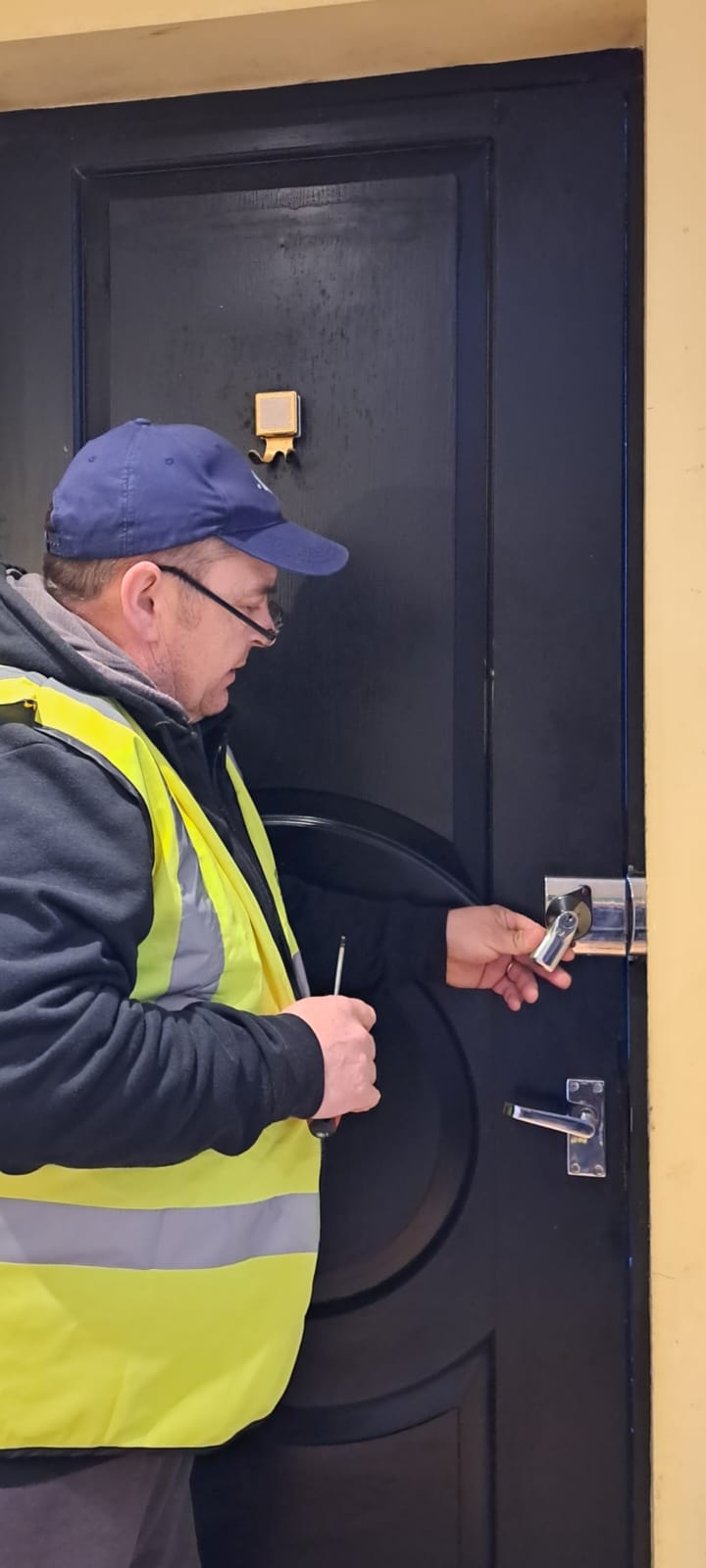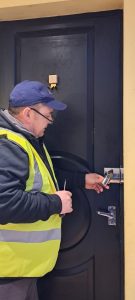If your patio door lock won’t lock, it’s usually a sign of either internal wear or misalignment between the door and frame. Over time, weather changes, dirt buildup, and daily use can all lead to jamming or incomplete locking.
Common causes for a lock-jammed patio door
Dirt and debris:
Dust and grime can clog the latch or internal mechanisms.
Misalignment:
If the hooks don’t line up with the strike plate, the lock won’t engage properly.
Worn gearbox or latch:
Frequent use wears down moving parts, making the handle stiff or unresponsive.
Loose screws or hinges:
When door hinges sag, even a slight shift can prevent the lock from fully closing.
Moisture or corrosion:
Outdoor doors can collect moisture, causing the lock to seize or rust.
DIY Fixes to Try Before Calling a Locksmith:
Clean and lubricate:
Use a soft brush or compressed air to remove dirt, then apply a silicone‑based lubricant (never WD‑40) to prevent sticking.
Check alignment:
Close the door slowly and see where the hooks meet the keeps. If they’re not lined up, adjust the roller screws or hinges using a Phillips screwdriver.
Test the latch:
Unlock the door while open—if it functions normally, misalignment is likely to blame.
Tighten fittings:
Check and secure any loose screws on handles, locks, or frame mounts.
Reset the mechanism:
Lift and lower the handle several times to reset the internal multi‑point mechanism. This can often free a jammed lock.
Locksmith Tip
If your patio door lock won’t lock even after adjustments, the internal gearbox may be worn beyond repair. A locksmith can replace the mechanism or re‑align the multi‑point system without needing a whole new door—restoring smooth function and security.


